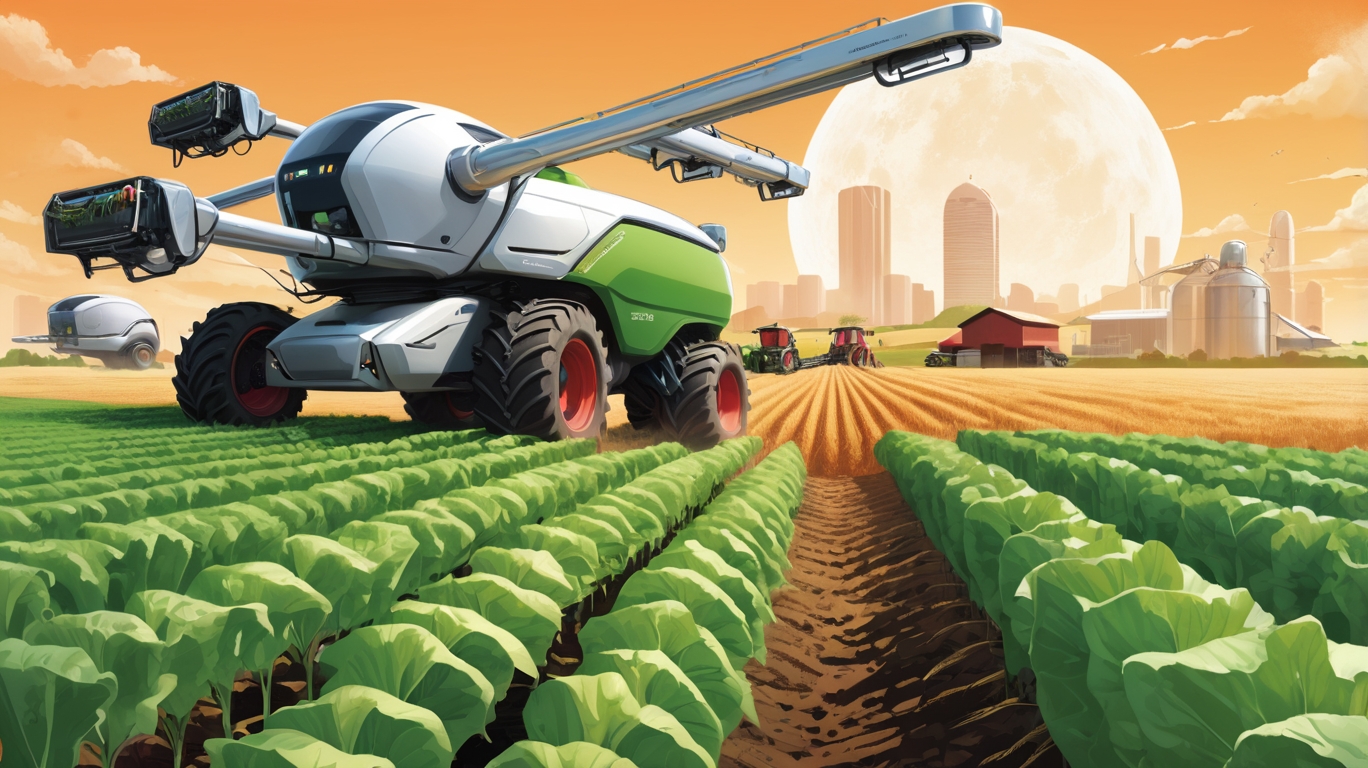The Future of Agribusiness: Trends and Predictions
As the world evolves, so does the way we grow, distribute, and consume food. Agribusiness—the backbone of global food security—is undergoing a quiet but profound transformation. Driven by technological advancements, environmental concerns, and shifting consumer preferences, the future of agriculture promises to be more efficient, sustainable, and resilient.
In this post, we’ll explore the key trends shaping agribusiness and what they might mean for farmers, businesses, and consumers in the years ahead.

1. Precision Agriculture: Farming with Data
Gone are the days of relying solely on intuition and tradition. Today, farmers are increasingly turning to precision agriculture—using sensors, drones, and AI-driven analytics to monitor crops, soil health, and weather patterns in real time.
- Smart Sensors & IoT: Devices measure moisture, nutrient levels, and pest activity, allowing for precise irrigation and fertilization.
- Automated Machinery: Self-driving tractors and robotic harvesters reduce labor costs and improve efficiency.
- Predictive Analytics: AI models forecast yields and suggest optimal planting times, minimizing waste.
This data-driven approach not only boosts productivity but also helps conserve resources, making farming more sustainable.
2. Sustainable and Regenerative Practices
With climate change threatening food security, sustainability is no longer optional. Farmers and agribusinesses are adopting regenerative agriculture—methods that restore soil health, sequester carbon, and enhance biodiversity.
- Cover Cropping & No-Till Farming: These techniques prevent soil erosion and improve water retention.
- Agroforestry: Integrating trees with crops creates more resilient ecosystems.
- Circular Agriculture: Waste is repurposed—like using crop residues for biofuel or animal feed.
Consumers are increasingly favoring brands that prioritize sustainability, pushing agribusinesses to adopt greener practices.
3. Vertical and Urban Farming
As urban populations grow, so does the demand for locally grown food. Vertical farming—growing crops in stacked, indoor environments—offers a solution.
- Year-Round Production: Controlled environments eliminate seasonal limitations.
- Reduced Water Use: Hydroponics and aeroponics use up to 90% less water than traditional farming.
- Fresher Produce: Urban farms supply nearby markets, cutting down on transportation emissions.
While still energy-intensive, advancements in LED lighting and renewable energy could make vertical farming a mainstream option.
4. Alternative Proteins and Agri-Food Tech
The rise of plant-based meats, lab-grown proteins, and insect-based foods signals a shift in how we think about protein production.
- Cultivated Meat: Grown from animal cells without slaughter, this technology could reduce livestock farming’s environmental impact.
- Plant-Based Alternatives: Companies like Beyond Meat and Impossible Foods continue to innovate, appealing to flexitarians and eco-conscious consumers.
- Insect Farming: High in protein and requiring minimal resources, insects may become a staple in animal feed and human diets.
These innovations could reshape the livestock industry, reducing land use and greenhouse gas emissions.
5. Blockchain for Transparency
Consumers want to know where their food comes from. Blockchain technology is being used to track food from farm to table, ensuring authenticity and safety.
- Supply Chain Traceability: Buyers can verify if products are organic, fair-trade, or locally sourced.
- Reduced Fraud: Tamper-proof records prevent mislabeling and food fraud.
- Efficient Recalls: If contamination occurs, blockchain helps quickly identify affected batches.
This transparency builds trust and could become a standard in agribusiness.
6. Climate Resilience and Adaptation
Extreme weather events—droughts, floods, and heatwaves—are disrupting agriculture. To adapt, farmers are:
- Developing Drought-Resistant Crops: Genetic engineering and CRISPR technology help create hardier plants.
- Diversifying Crops: Planting a variety of species reduces risk.
- Investing in Water Management: Rainwater harvesting and drip irrigation conserve water.
Governments and organizations are also supporting farmers with climate-smart policies and insurance programs.
Looking Ahead: A Balanced Future
The future of agribusiness is not just about producing more food—it’s about producing it smarter, cleaner, and fairer. While challenges like climate change and population growth loom large, the innovations emerging today offer hope for a more sustainable and resilient food system.
For farmers, embracing technology and sustainable practices will be key. For consumers, supporting ethical and eco-friendly brands can drive positive change. And for policymakers, fostering innovation while protecting small-scale farmers will be crucial.
One thing is certain: the way we farm and eat is changing. And if we navigate this shift thoughtfully, the future of agribusiness can be one of abundance—for people and the planet alike.
What trends do you think will have the biggest impact? Share your thoughts below.